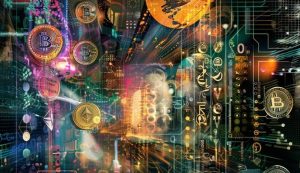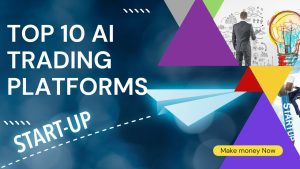Moon Landing Initiative brings neural diversity to NFTs and supports nonprofits
A non-erasable token, or NFT, is a certificate of ownership that represents digital artwork, music, video, audio, memorabilia, etc. They quickly became popular over the year as they allow everyday artists to create and sell content. In fact, OpenSea, the world’s largest NFT marketplace, recently exceeded $ 1.6 billion in monthly trading volume.
Like physical works of art, NFTs can be auctioned for charity or donated to charitable groups with generous tax deductions. From funding the construction of a school in Uganda to helping front line health workers, NFT nonprofit drops can play a vital role in making a positive difference to society.
In an exclusive interview with Cointelegraph, Lisa Slominski and Nick Dehadray, the co-founders of Moon Landing, a new initiative for neural diversity in the NFT space, discussed the upcoming NFT auction, which aims to attract contemporary artists with intellectual disabilities and the non-profit Studio they work for. The main themes of the work are pop culture and nostalgia, interwoven with moments of struggle and persistence from the everyday life of the artists. The collection is Is called NFToons can now be previewed and auctioned off to the public starting January 2022.
We’re landing on the moon!
An initiative for # neurodiversity Within #NFT Space through collaboration with non-profit studios for artists with disabilities.Our first project – #NFToons above @Project_Onward
Check out the preview now @open sea
The sales department supports his non-profit studio + artist pic.twitter.com/CDGd4rW0mE– Moon landing initiative (@moonlandingnft) November 24, 2021
Cointelegraph: Please tell me who are some of the artists behind your NFT project?
Lisa Slominski: Sure, so the first project is NFToons, which is eight artists working with Project Onward, a Chicago nonprofit that supports artists with various intellectual disabilities and social needs. One of these eight artists is a wonderful artist named Ruby Bradford. And I’ve curated shows with her before, and her activism relies heavily on Superman and Cats, both of whom associate care and familiarity. For NFToons, we actually captured one of her iconic images of Superman as a cat, then animated it, moved it off the screen and she actually sang the soundtrack for the .mp4-NFT where she performed a Superman-themed cat song. So this is an example.
Another artist named Louis Demarco. In fact, I have one of his drawings there (pointing to a piece of art on the mantelpiece behind her). But he made really interesting works called “Words to Live”. He makes much of tech space work according to the mantras he says to himself. He also develops his own script as if in a band. So he came up with a concept for a TV show called ‘Toasters’ and it was his own mix of ‘Friends’ and ‘Cheers’. So he created a pilot episode that we’ll be promoting on Twitter and Instagram for everyone to see. His NFT is his drawing of two characters’ apartments. And he also made his own soundtrack for the TV show. So that’s the tone on it.
CT: So read the press release. Of course, part of the proceeds will be donated to charity; What organization would that be?
LS: The charity is their studio. All of these artists job in a day art studio, The Project Onward. Project Onward is a 501 (c) (3) non-profit organization. [Legal U.S. federal income tax-exempt non-profit entity] Chicago charities that support these disabled artists. So 80% of the income goes back to this studio and the artists. For each project, Moon Landing plans to partner with a nonprofit studio that supports artists with disabilities. Wherever we work with their artists, the NFT is created and the proceeds go to the artists and studios. Our second project will take place with the Arts Project Australia Studio in Melbourne.
I don’t know if you heard about it – but we have a schedule!
Check out our other post for a general PO Cal, but these are the HIGHLIGHTS of SNEAK #Ruby Bradford Original!
️️️Check them out at the link in our bio and check out more information in our latest Instagram post! #Note the appointment # POcal2022 pic.twitter.com/KhfxtotV9z
– Continue project (@Project_Onward) November 23, 2021
CT: So what was the main inspiration for you to work with these artists to tell their stories?
LS: Sure, so I’ve been working in the broader field of neurodiversity in contemporary art for the past three years. And I’ve only worked in contemporary art, and I’ve worked here in London for an organization called The Museum of Everything, and they’ve been looking at what a lot of people call “art” from viewers, that’s a problematic term. but it often includes certain types of artists with disabilities, self-taught, artists from marginalized positions. Anyway, after I left there and started working on my independent project, I really found that it was through these handicapped internships that I came into contact with a number of artists. I just loved the artwork that came out of these studios.
And I figured these are just contemporary artists, despite their disabilities. They were just young contemporary artists so I started including them in the exhibitions I curated. I’ve written several articles about her for Artsy. However, specifically for these studios internationally, there are probably 30 to 50 different versions of these non-profit studios that aim to provide professional development and creative environments for artists with different social needs and disabilities to develop creative activities. And I met Nick a few years ago; he did some commercials for some of the shows I curated and then yes. Based on this, I realized that given his interest in NFT and my creative diversity and interests, it would be a great opportunity to do something interesting and meaningful in the NFT field.
Nick Dehadray: Yeah, I think what I saw was really how the NFT room supported self-taught artists and that it was, and still is, a really strong community. I think it’s really relevant to this type of work, neurotic artists learn by themselves and create art that others can enjoy. So it really seems to make sense that NFTs could be a really cool place for them to sell, while I think those prices aren’t really that high in the contemporary art market. This may give them a better chance of doing their job in the NFT space.
CT: Other technical questions; Given the very high price of Ethereum gas, it can cost hundreds of dollars to create an NFT. Will you support the artists financially when they participate in the auction?
NS: Well, we’re going to do it as an auction through OpenSea. So the minting is done by the buyers and we will do that on Ethereum for this coin, but we also looked at other currencies like Polygon that don’t charge the speed of light gas. But for now, Ethereum has an even bigger usage rate. So it seems reasonable to go with this one at the moment.
LS: Right, we work directly with the studios, who do all of this in advance.
CT: Would you like to include a mission statement for your work?
LS: That’s right, just a couple of things about Nick’s point of view. There are some similarities, I mean diversity in general, in contemporary art it’s a struggle, and neurodiversity is new. And at the moment there are discussions, as I said last night, the name ‘Can we be artists?’ And the point is that artists with neuroses create a perspective space in the art world. So I think the NFT room has the ability to democratize everything and create direct access to the audience. It has huge potential and can really highlight a lot of artists who would otherwise struggle to get into the art world, which I find very interesting. And then we try to promote these artists, these non-profit organizations. We know that people in NFT space are asking about diversity, about neural diversity. But it is difficult to connect with them.
NS: Yes, that is one of the difficulties we face. Since there are big influencers like gmoney, they make comments that we need more diversity in this area. But we’re not visible at the moment because we’re just getting started. But we’ll try to text gmoney, but he doesn’t answer.
LS: Yes it really is. Obviously, hopefully NFToons is the original project. Thereafter, Moon Landing will continue this initiative. So we have two more supporting studios that we count on to do other projects with the same interest in working with nonprofits in support of artists with disabilities to create unique NFTs. And pass them on to artists and nonprofits.
NS: And this is…
.



















